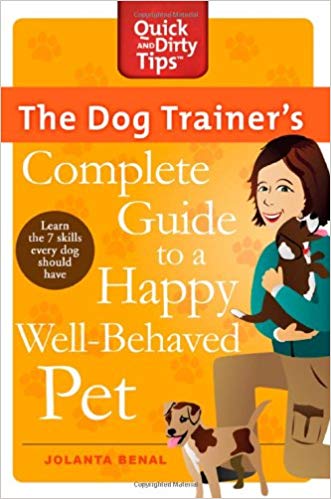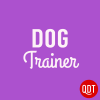How to Prevent Your Dog From Biting Kids
When do dogs bite kids? What situations are most dangerous? Learn the triggers and techniques to avoid biting.
In spite of claims that there’s a “dog bite epidemicopens PDF file ,” only a small proportion of bites need more than a thorough cleaning and a Band-Aid. But that’s not much comfort if it’s your child having plastic surgery, or your dog being euthanized. This week, I’ll talk about the circumstances under which most dog bites happen, and how parents and dog guardians can help prevent them.
Buy Now

Most Bites Are by Familiar Dogs
Many people worry about kids being bitten by unfamiliar dogs and stray dogs. “Stranger danger,” right? Actually, when kids are bitten, it’s most often by a familiar dog. This comes as no surprise to any dog behavior specialist who’s broken out in a cold sweat watching YouTube videos of supposedly cute interactions between dogs and tiny children. Parents chortle while their children climb and jump on dogs, pull toys out of dogs’ mouths, roll over the dog’s feet, and on and on. Well, the kids don’t know any better, but their parents should. Here are a few precautions that adults should take to make sure children are never on the receiving end of a bite:
#1 — Be Aware of Dogs’ Legitimate Needs
Very tiny children, of course, don’t understand that animals get tired and feel pain. Slightly older children understand that animals have feelings but can’t always control their own impulses and regulate their behavior. Obviously you should make sure ear pulling and tail-lengthening exercises are off the kids’ agenda, but be mindful, too, of behavior that can annoy and irritate even if it doesn’t hurt. I remember one client whose 10-week-old toy breed puppy had begun growling at the small children in the house. It hadn’t occurred to their parents that a baby of any species needs plenty of rest, so they allowed the kids to handle the puppy constantly. The children just wanted to carry that cute little furry item and give him hugs, but the puppy was out of his mind with exhaustion. No one was looking out for his needs, so this perfectly nice puppy had started to defend himself with growls.
Some other factors to consider: Is your dog old and achy? Does your small dog need a refuge, safe from tumbling children? Has there been a fight at the dog park, or a lot of noise from nearby construction? Watch for stressors piling up—even a normally even-tempered dog can get irritable by the end of a long, hard day. Little Hannah trips and falls, landing right on the hip that’s sore from getting vaccinated, and snap.
#2 — Watch Your Dog’s Body Language
A happy, relaxed dog moves softly and loosely. The muscles of her face will be soft; she may squint and her ears may be back slightly. Her mouth will probably be open, and the corners of her lips will be pulled back. Suppose your dog is resting but makes a smiley face and thumps her tail on the ground when your child approaches: good sign! If she gets up and moves away, though, she’s signaling a wish to be left alone just then. And if she moves away whenever your child comes near, get help. Watch excited play closely, and give everybody a breather if either the dog or the kids seem to be spiraling up, up, up.
Browsing Amazon turns up any number of books with cover pictures of kids hugging dogs. Some of these are even books purporting to educate children on how to interact with dogs! Too bad most dogs dislike being hugged. You can see it in their faces: they look away from the person hugging them, and their mouths are shut tight. Now, I don’t know anybody, myself included, who doesn’t sometimes just have to hug her dog. And there are those few dogs who actually like hugs. In general, though, it’s best to limit hugs and to pair them with something your dog really does enjoy. A brief, gentle hug from a well-loved 5-year-old could be followed by a chest scratch, for example, or a biscuit offered in the flat of the hand.
For realistic and informed resources on managing dog-kid relations, check out the website Doggone Safe and Colleen Pelar’s book Living with Kids and Dogs … Without Losing Your Mind.
#3 — Watch Out for Common Touchy Situations
Reliable data are hard to come by, but probably the single most common dog-bites-kid trigger is food guarding. The dog’s eating; he stiffens up as the toddler approaches; the toddler, being a toddler, doesn’t recognize the warning. Small children’s faces are near many dogs’ mouth height, and even an inhibited bite can badly damage delicate skin.
In an earlier article, I discussed resource guarding and how to prevent it. If your dog guards his food, toys, or resting spots, then keep toys put away, be sure there’s a physical barrier between him and your child when the dog is eating or resting, and get a competent specialist in behavior modification to help you manage the problem and defuse it as much as possible.
An older child visiting a friend may not think twice about entering a yard where there’s a familiar dog. But if the dog wasn’t appropriately socialized in puppyhood, he may react aggressively to people entering the yard or house, even if he’s met them before. Such territory guarding seems to be the most common trigger for dog bites to older children. So if your child is visiting friends who have a dog, be sure the dog greets guests in friendly, welcoming ways. If your dog is the one who’s touchy about people stopping by, crate or otherwise confine him, and, again, get professional help.
Should You Rehome Your Dog?
It is reasonable to consider rehoming your dog if you have a significant worry that he may bite your child. Most rehomed dogs adjust well and bond quickly with their new guardians. Don’t just cross your fingers and hope a bite won’t happen; your child doesn’t deserve to get hurt, and if your dog does bite a child, your options for placing him drop off steeply.
Dog bites are scary. So let’s remind ourselves once again that although dogs often growl, snap, and bite, serious injury is surprisingly rare. We can help by appropriately socializing our puppies, by avoiding force and coercion in training our dogs, and by informing ourselves about dogs’ needs and body language so everybody can stay best friends.
Visit The Dog Trainer on Facebook, follow me as Dogalini on Twitter, and write to me at dogtrainer@quickanddirtytips.comcreate new email. I usually can’t reply personally, but I read all your emails and may use them as the basis for future episodes. Have a safe, happy week with your dog!
Image courtesy of Shutterstock


